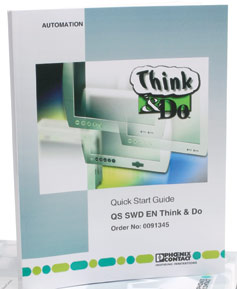Control fads have come and control fads have gone, but through it all Programmable Logic Controllers (PLCs) have withstood the test of time. However, there are times when the basic ladder logic programmed PLC is not the best answer to your control solution. Enter PC-based control …
PC-Based Control
PC-based control (application control from a personal computer) entered the automation control market some 15 years ago and was quickly tagged as the PLC replacement – obviously this did not happen. However, we have seen this type of control settle in with a comfortable following.
 For many, ladder logic programming may seem archaic or simply just not as familiar as another style of programming. Ladder logic was designed to resemble an electrical schematic because the PLC was originally intended to be a simple relay replacement and those programming the PLC were more familiar with writing, reading or troubleshooting from an electrical schematic.
For many, ladder logic programming may seem archaic or simply just not as familiar as another style of programming. Ladder logic was designed to resemble an electrical schematic because the PLC was originally intended to be a simple relay replacement and those programming the PLC were more familiar with writing, reading or troubleshooting from an electrical schematic.
However, as control systems have advanced with available technologies, the PLC has become much more than a relay replacement. With that being said, today’s control platform programmers have a much wider background and may prefer to take advantage of the PC
influence in today’s world. It is not uncommon to find a high school graduate versed in one or more computer-based programming and assembly languages.
With this influence pouring into our market more and more each year, it is understandable why today’s younger programmers would prefer a programming option other than ladder logic. In this case, PC-based control is a very suitable solution. Many saw the benefits of the advanced PC technologies – more memory, faster processing, communications capabilities and flexibility. However, there was always concern for the reliability of a PC as the control engine in an automation environment, and rightly so. Aside from a few specifically designed and very expensive exceptions, the generic PC was not designed to withstand the typical industrial environment.
It appears that PC-based control has found a ‘niche’ in the market and serves many applications very well. Not all applications subject the controller to a rugged environment, and may, in fact can, be designed to provide the clean and cool (but not cold) atmosphere needed to provide long reliable life for a personal computer.
So what application characteristics qualify as suitable for PC-based control? Let’s take a look at a few areas where this excels:
• The need for an Human Machine Interface (HMI) as well as control
• Advanced data manipulation (even string arrays) and advanced math functions
• Data exchange with business applications (from spread sheets to ERP systems)
• One or more third-party PC cards, such as those for motion control or vision systems
• Communication with serial or networked field devices
• Storage or access to large amounts of data
• Large number of PID loops (64 or more)
• Open architecture for C/C++ or VisualBasic
• Online productivity tools to analyze and improve the performance of your process
These are a few application needs that help define the PC-based control market, but what are some of the real advantages? In a popular package such as Think & Do from Phoenix Contact, they include:
• With Think & Do, your control environment, HMI and motion control all share the same database so your original development time is drastically reduced.
• The math functionality is the same as found in high-level programming languages so it easily calculates complex algorithms and data management.
• The PC architecture allows Think & Do to seamlessly support a variety of specialized motion control, vision systems and field bus network interface PC cards.
• This same architecture also allows for simplistic interoper- ability with serial devices like barcode readers and interface to Enterprise Resource Planning (ERP) and Structured Query Language (SQL) databases.
A wise man once said, “To each, his own.” This is, perhaps, why PLCs are still as popular as ever and why PC-based control is satisfying the needs of many as well.
View products from AutomationDirect that relate to this article: Think & Do
By Jeff Payne,
AutomationDirect Product Manager
PLC, I/O and PC-Controls Group
Originally Published: June 1, 2008

